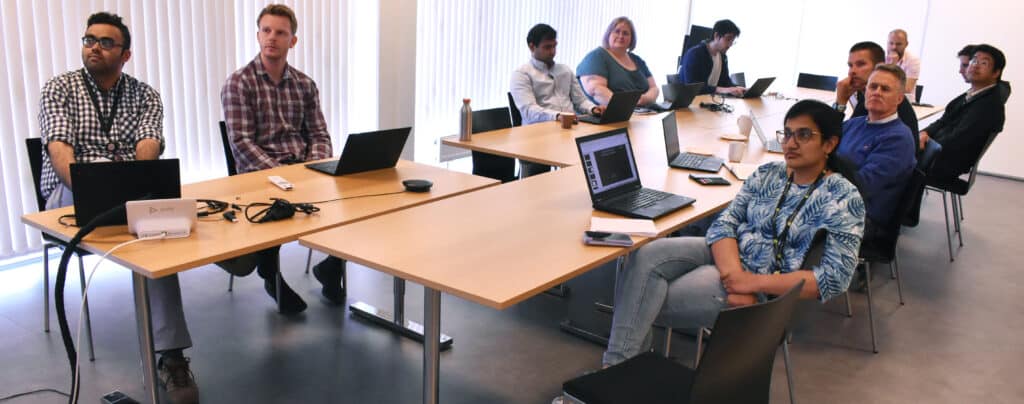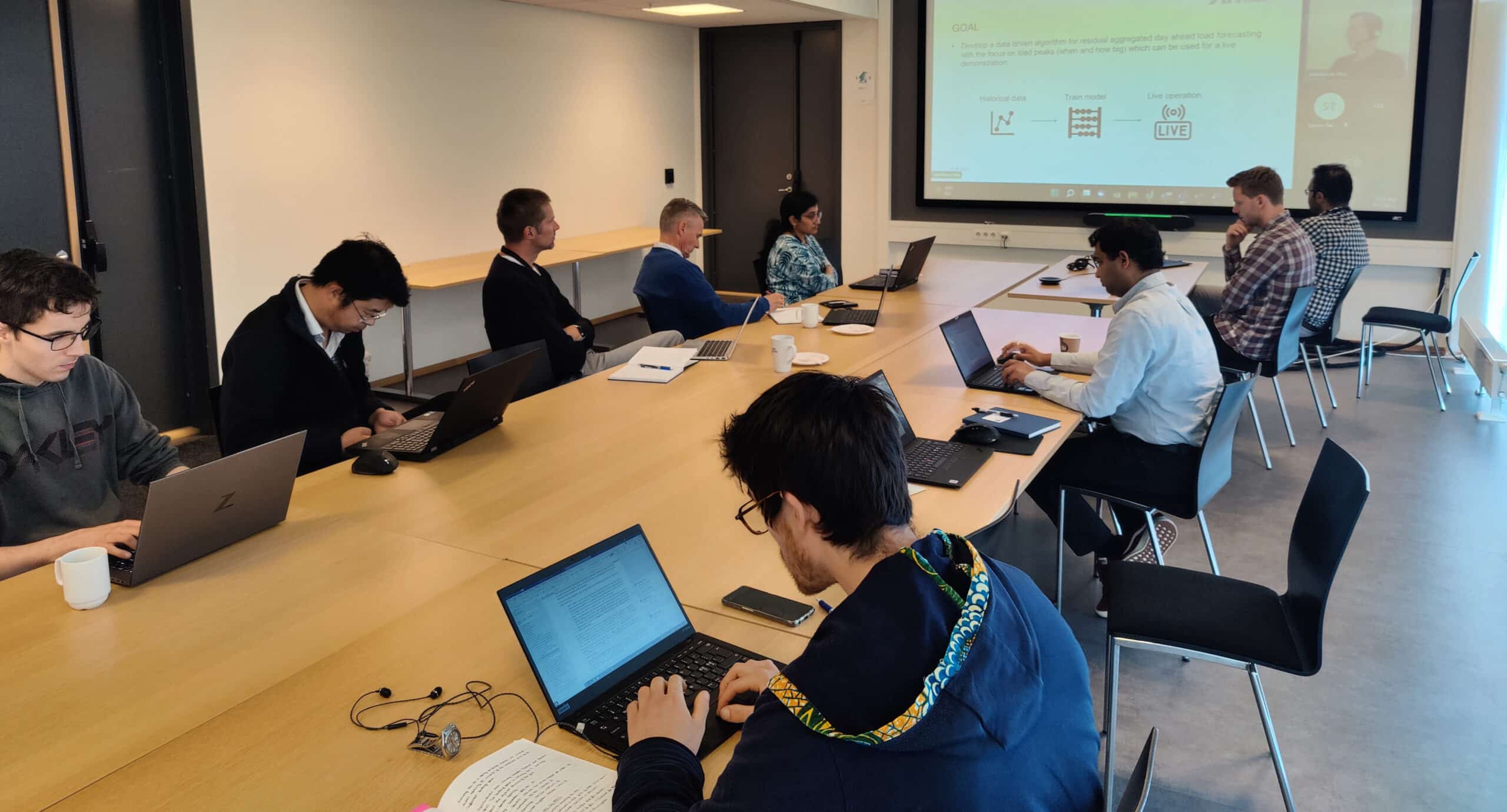Being an active partner of the EU H2020 Flexgrid project, Smart Innovation Norway facilitates a forum where national and international research partners can integrate and establish collaborations with each other and industrial cluster members.
Smart Innovation Norway has a unique position to create sustainable green jobs from research. That is because the company is a partner and coordinator of several national and international research projects in combination with the company’s incubator and commercialization activities.
In June, Smart Innovation Norway, with its partners from the European H2020 project Flexgrid, facilitated the workshop on Forecasting in Energy. The participants included partners from the Flexgrid project, the Norwegian project Inthydro, and cluster member eSmart Systems from the NCE Smart Energy Markets.
Predicting energy parameters is extremely important to enable a Renewable Energy Sources (RES) based electricity system. The workshop topics are of enormous interest among academia, regulators, industry and citizens worldwide.
– The workshop was of great value to sharing knowledge on production and electricity price forecasting, says Farhan Farrukh, a researcher at Smart Innovation Norway, who facilitated the workshop.
The Horizon 2020 project Flexgrid is an EU-funded project about how grids in the future require an effective interaction between energy markets and electricity grid management systems to introduce new services and mitigate risks presented by renewable energy sources. The Flexgrid project hosted the workshop, where the agenda focused on solar PV production forecasting and the second part on the electricity market prices forecasting.

Production and peak forecasting
One part of the project’s research focuses on predicting tomorrow’s solar PV generation. The project partner University of Cyprus (UCY) has developed the algorithm using the latest research methodology of applied deep learning. The results of the project forecasting were shared for the Solar PV array installed on the campus of the University of Cyprus.
An interesting follow-up presentation from a commercial actor like eSmart Systems highlighted the unique practical details that need to be considered before taking these production forecasting algorithms to market. These suggestions involved topis around cloud architecture, deployment, and training practices to keep the costs down and obtain maximum benefit for the customer of such forecasting tools.
The use of electricity in society has changed and increased significantly over the last few decades leading to higher and higher peaks in the grid many times a day. Such fluctuations are challenging for the grid operator to manage because of cost and capacity problems.
– Our Flexgrid partner and grid operator bnNetze from Germany is the pilot site owner and a local distribution system operator (DSO) from Germany. BnNetze should not exceed certain limits because if they do, the overall network gets in trouble because of limited capacity. So, they get penalized, leading to increased electricity bills. In the end, it affects the end-consumer, explains Farrukh.
As part of the Flexgrid project, the Austrian Institute of Technology (AIT) and bnNetze have modelled the entire electricity network in the German town of Freiburg, used data inputs to train their algorithm, and used different approaches to try to predict when the peaks appear. At the workshop, they presented the results.
– Many commented that this was very important in the future. The work is significant because our electricity network has more and more renewable energy sources. We also have what we call distributed energy resources because they are distributed from people’s houses to industries to EV charging, and there are many fluctuations in energy demand and supply at the local level, says Farrukh.
Electricity market price forecasting
The Flexgrid project has developed an algorithm that predicts the electricity prices based on the historical data taken from the NordPool electricity market and the FinnGrid Balancing market. The model was trained for average market prices, but interesting results were observed on the impact of abrupt price changes due to Covid-19 and the recent Ukraine conflict. The University of Cyprus explained their approach, the data they used, the results they achieved, and the problems they faced while developing market price forecasting models.
Inthydro is a Norwegian Chinese collaboration. Smart Innovation Norway’s work on predicting these sudden changes in electricity price forecasting is one of the main objectives of the IntHydro project. At the workshop, Smart Innovation Norway’s senior advisor Professor Bernt Bremdal presented the project. The participants discussed results and shared experiences from both projects on predicting these sudden changes in electricity prices.
– The prediction of electricity market prices is highly relevant for today’s European market with high energy prices and the impact of this on our society as a whole. Based on these predictions, several actors can make optimal decisions and adjust their position more appropriately to reduce their underlying costs, which helps in a cost-effective and efficient electricity system, says Farrukh.
– The idea of the workshop was to disseminate each other’s knowledge and see what better we can do regarding forecasting in energy. Connecting national and international projects like this is essential to Smart Innovation Norway’s role, says Farrukh.
Flexgrid ends in September 2022, and the goal is to maximize project results’ impact on various actors of society. A second workshop is planned for September, focusing on the flexibility value chain and standardization activities around Flexibility markets.
FACTS ABOUT FLEXGRID:
The goal of FLEXGRID is to facilitate energy sector stakeholders (DSOs, TSOs, ESPs and RESPs) to:
1) easily and effectively create advanced Energy Services (ESs)
2) interact in a dynamic and efficient way with their environment (electricity grid) and the remaining of the stakeholders
3) automate and optimize the planning and the operation of their ESs.
In this way, FLEXGRID envisages secure, sustainable, competitive, and affordable ESs.
This section clarifies the objectives of FLEXGRID by:
1. categorizing them as orthogonally as possible
2. presenting them accurately
3. revealing the interactions among them
Click to read more about Flexgrid!
CONTACT:

Farhan Farrukh,
Researcher Smart Energy Technologies
Phone: +47 960 03 052

